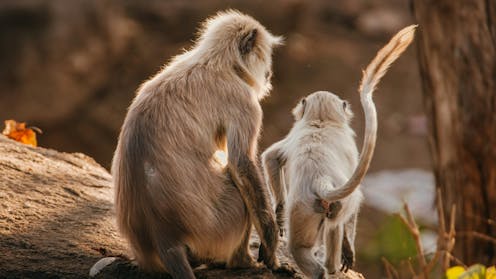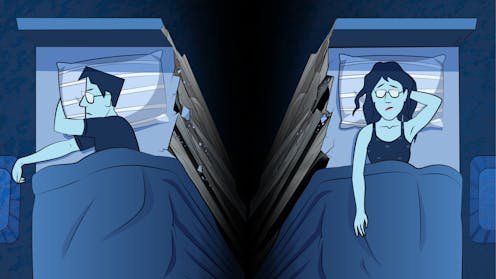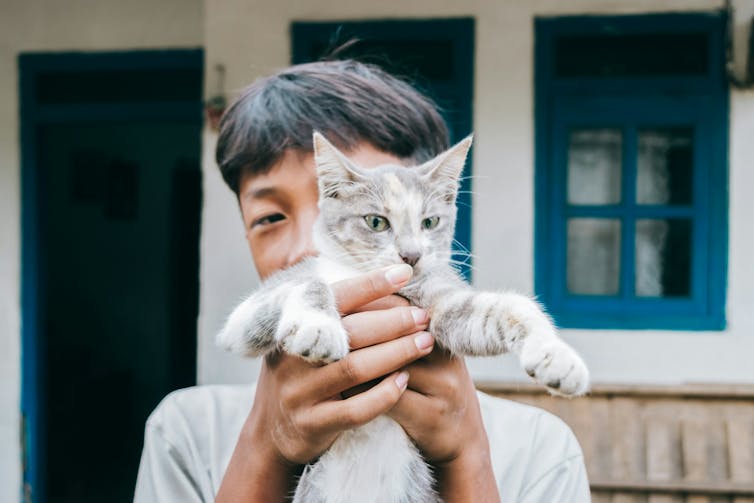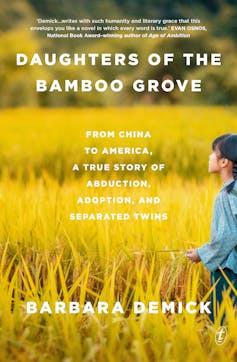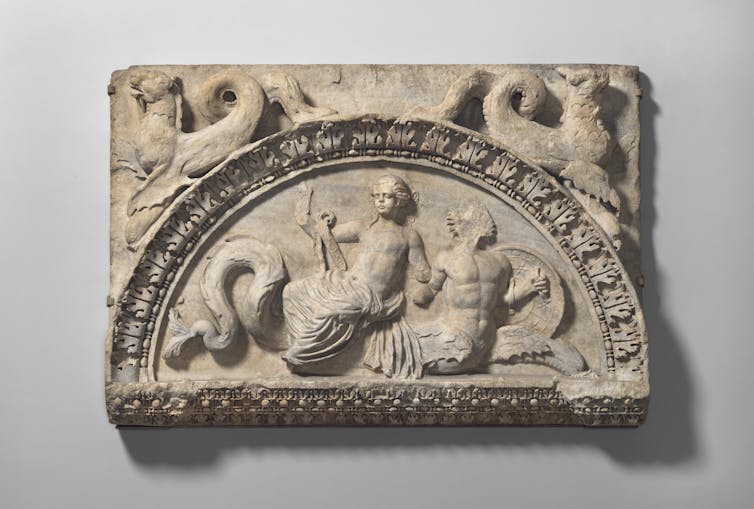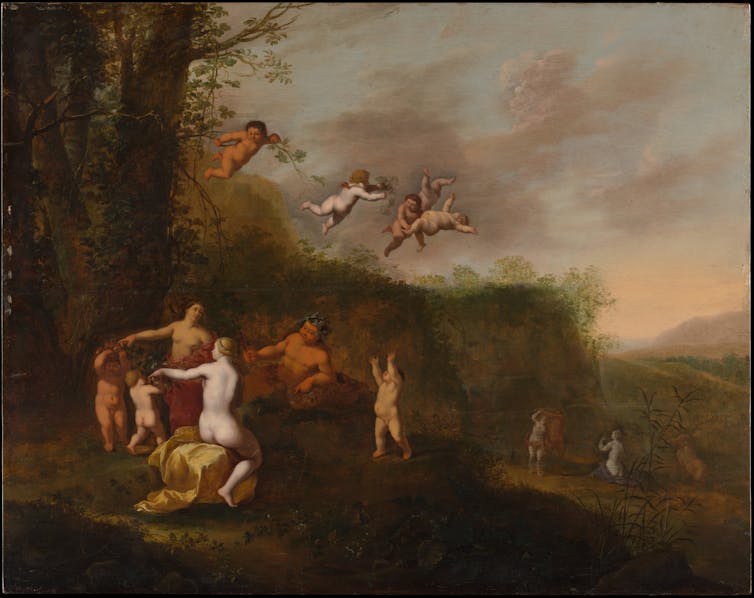Source: The Conversation – in French – By Rodolphe Tabuce, Chargé de recherche CNRS, Université de Montpellier

Face aux grands bouleversements climatiques actuels, une question essentielle se pose : comment les animaux, et en particulier les mammifères, vont-ils répondre aux futures hausses conséquentes de température ?
Pour donner des pistes de réflexion tout en se basant sur des faits observés, on peut se tourner vers le passé, il y a environ 56 millions d’années. À cette époque, deux courts mais très intenses réchauffements climatiques sont concomitants de changements fauniques sans précédent en Europe. Nous venons de publier nos travaux dans la revue PNAS, qui permettent de mieux comprendre cette étape charnière de l’histoire des mammifères.
Un réchauffement propice aux mammifères
Le premier pic de chaleur dont nous avons étudié et synthétisé les conséquences est nommé Maximum Thermique du Paléocène-Eocène (ou PETM). Il s’agit d’un événement hyperthermique, daté à 56 millions d’années, qui a vu les températures continentales augmenter de 5 à 8 °C en moins de 20 000 ans. Évidemment, cette durée est sans commune mesure avec la rapide augmentation des températures depuis deux siècles due aux activités humaines, mais le PETM est considéré par les paléoclimatologues comme le meilleur analogue géologique au réchauffement actuel par sa rapidité à l’échelle des temps géologiques, son amplitude et sa cause : un largage massif de méthane et de CO2 dans l’atmosphère, très probablement issu d’épanchements gigantesques de basaltes sur l’ensemble de l’actuel Atlantique Nord (Groenland, Islande, Norvège, Nord du Royaume-Uni et Danemark).
Ces puissants gaz à effet de serre, et l’augmentation des températures ainsi engendrée, ont causé des bouleversements fauniques et floristiques dans tous les écosystèmes marins et terrestres. En Europe, en Asie et en Amérique du Nord, le PETM a coïncidé avec l’apparition soudaine des premiers primates (représentés aujourd’hui par les singes, les lémuriens et les tarsiers), artiodactyles (représentés aujourd’hui par les ruminants, les chameaux, les cochons, les hippopotames et les cétacés) et périssodactyles (représentés aujourd’hui par les chevaux, les zèbres, les tapirs et les rhinocéros). Cet événement a donc joué un rôle majeur, en partie à l’origine de la biodiversité que nous connaissons aujourd’hui.
Mais tout juste avant ce grand bouleversement, un autre épisode hyperthermique plus court et moins intense, nommé Pre-Onset Event du PETM (ou POE), s’est produit environ 100 000 ans plus tôt, vers 56,1 millions d’années. On estime aujourd’hui que le POE a induit une augmentation des températures de 2 °C. Certains scientifiques pensent que ce premier « coup de chaud » aurait pu déclencher le PETM par effet cascade. Pour en revenir à l’évolution des paléo-biodiversités, autant l’impact du PETM sur les faunes de mammifères est relativement bien compris, autant l’impact du POE restait inconnu avant nos travaux.
Une recherche de terrain minutieuse en Occitanie
Pour répondre à cette problématique nous avons focalisé nos recherches dans le sud de la France, dans le Massif des Corbières (département de l’Aude, région Occitanie), où les couches géologiques de la transition entre le Paléocène et l’Éocène sont nombreuses et très épaisses, laissant l’espoir d’identifier le PETM, le POE et des gisements paléontologiques à mammifères datés d’avant et après les deux pics de chaleur. Autrement dit, nous avions comme objectif de décrire très clairement et objectivement les effets directs de ces réchauffements sur les faunes de mammifères.
Durant plusieurs années, nous avons donc engagé des études pluridisciplinaires, en combinant les expertises de paléontologues, géochimistes, climatologues et sédimentologues. De plus, via des actions de sciences participatives, nous avons impliqué dans nos recherches de terrain (prospections et fouilles paléontologiques) des amateurs en paléontologie, des naturalistes et autres passionnés du Massif des Corbières. Nos travaux ont abouti à la découverte d’une faune de mammifères sur le territoire de la commune d’Albas. Cette faune est parfaitement datée dans le très court intervalle de temps entre le POE et le PETM. Dater un site paléontologique vieux de plus de 56 millions d’années avec une précision de quelques milliers d’années est tout simplement remarquable. Les scénarios qui en découlent, en particulier ceux relatifs à l’histoire des mammifères (date d’apparition des espèces et leurs dispersions géographiques) sont ainsi très précis.
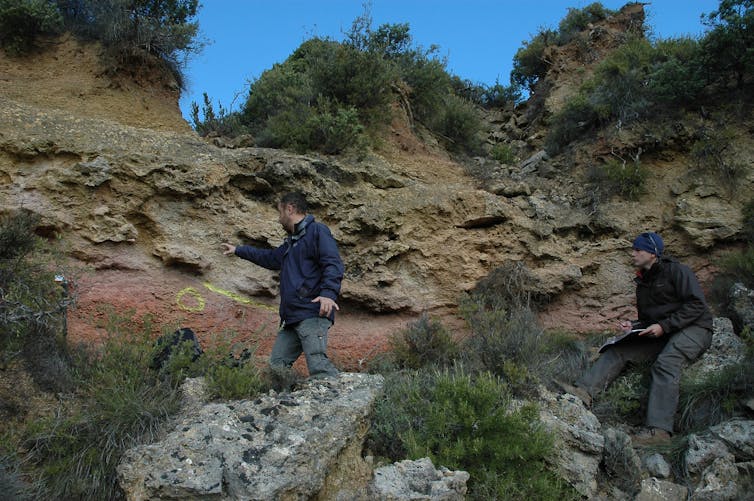
Rodolphe Tabuce, Fourni par l’auteur
La datation du gisement fossilifère découvert à Albas a été réalisée par analyse isotopique du carbone organique contenu dans les couches géologiques. Les roches sédimentaires (calcaires, marnes et grès) que l’on rencontre dans la nature actuelle proviennent de l’accumulation de sédiments (sables, limons, graviers, argiles) déposés en couches superposées, appelées strates. À Albas, les sédiments rencontrés sont surtout des marnes, entrecoupées de petits bancs de calcaires et de grès. Il faut imaginer ce « mille-feuille géologique » comme les pages d’un livre : elles nous racontent une histoire inscrite dans le temps. Ce temps peut être calculé de différentes manières. Alors que l’archéologue utilisera le carbone 14, le géologue, le paléoclimatologue et le paléontologue préféreront utiliser, par exemple, le rapport entre les isotopes stables du carbone (13C/12C). Cette méthode à un double intérêt : elle renseigne sur la présence d’évènements hyperthermiques lors du dépôt originel des sédiments (plus le ratio entre les isotopes 13C/12C est négatif et plus les températures inférées sont chaudes) et elle permet de donner un âge précis aux strates, puisque les événements hyperthermiques sont des épisodes brefs et bien datés. L’augmentation soudaine de 12C dans l’atmosphère durant les événements hyperthermiques est expliquée par la libération rapide d’anciens réservoirs de carbone organique, naturellement enrichis en 12C, notamment par le résultat de la photosynthèse passée des végétaux. En effet, aujourd’hui comme dans le passé, les plantes utilisent préférentiellement le 12C : plus léger que le 13C, il est plus rapidement mobilisable par l’organisme.
Ainsi, POE et PETM sont identifiés par des valeurs très fortement négatives du ratio 13C/12C. La puissance de cette méthode est telle que l’on peut l’appliquer à la fois dans les sédiments d’origine océanique que dans les sédiments d’origine continentale déposés dans les lacs et les rivières comme à Albas. On peut ainsi comparer les âges des gisements fossilifères de manière très précise à l’échelle du monde entier. La faune découverte à Albas a donc pu être comparée aux faunes contemporaines, notamment d’Amérique du Nord et d’Asie dans un contexte chronologique extrêmement précis.
Une faune surprenante à Albas
La faune d’Albas est riche de 15 espèces de mammifères documentées par plus de 160 fossiles, essentiellement des restes de dents et de mandibules. Elle documente des rongeurs (le plus riche ordre de mammifères actuels, avec plus de 2000 espèces, dont les souris, rats, écureuils, cochons d’Inde, hamsters), des marsupiaux (représentés aujourd’hui par les kangourous, koalas et sarigues), mais aussi des primates, insectivores et carnassiers que l’on qualifie « d’archaïques ». Cet adjectif fait référence au fait que les espèces fossiles identifiées n’ont aucun lien de parenté direct avec les espèces actuelles de primates, insectivores (tels les hérissons, musaraignes et taupes) et carnivores (félins, ours, chiens, loutres, etc.). Dans le registre fossile, de nombreux groupes de mammifères « archaïques » sont documentés ; beaucoup apparaissent en même temps que les derniers dinosaures du Crétacé et la plupart s’éteignent durant l’Éocène, certainement face à une compétition écologique avec les mammifères « modernes », c’est-à-dire les mammifères ayant un lien de parenté direct avec les espèces actuelles. Beaucoup de ces mammifères « modernes » apparaissent durant le PETM et se dispersent très rapidement en Asie, Europe et Amérique du Nord via des « ponts terrestres naturels » situés en haute latitude (actuel Nord Groenland, Scandinavie et Détroit de Béring en Sibérie). Ces voies de passage transcontinentales sont possibles car les paysages de l’actuel Arctique sont alors recouverts de forêts denses tropicales à para-tropicales, assurant le « gîte et le couvert » aux mammifères.
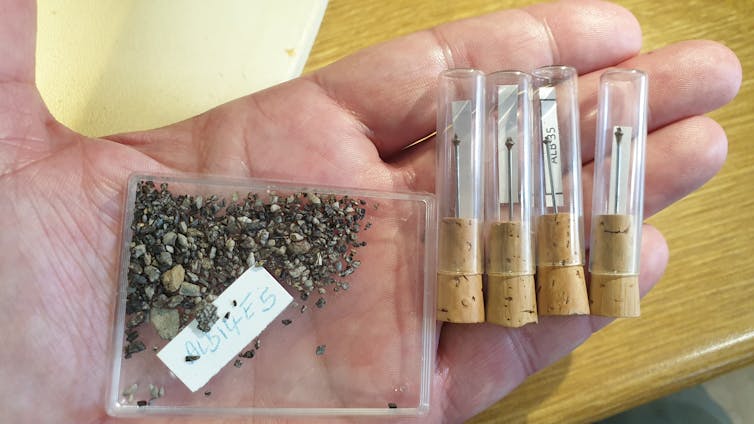
Rodolphe Tabuce, Fourni par l’auteur
Dans la foulée de ces premières dispersions géographiques, on assiste à une diversification du nombre d’espèces chez l’ensemble des mammifères « modernes » qui vont très rapidement occuper tous les milieux de vie disponibles. Ainsi, en plus des groupes déjà évoqués (tels les primates arboricoles), c’est à cette période qu’apparaissent les premiers chiroptères (ou chauves-souris) adaptés au vol et les premiers cétacés adaptés à la vie aquatique. C’est pour cette raison que l’on qualifie souvent la période post-PETM de période clef de l’histoire des mammifères car elle correspond à la phase innovante de leur « radiation adaptative », c’est-à-dire à leur évolution rapide, caractérisée par une grande diversité écologique et morphologique.
Une découverte qui change les scénarios
Mais revenons avant le PETM, plus de 100 000 ans plus tôt, juste avant le POE, durant la toute fin du Paléocène. À cette époque, nous pensions que les faunes européennes étaient composées d’espèces uniquement « archaïques » et essentiellement endémiques car cantonnées à l’Europe. Le continent est alors assez isolé des autres masses continentales limitrophes par des mers peu profondes.
La faune d’Albas a mis à mal ce scénario. En effet, elle voit cohabiter des espèces « archaïques » essentiellement endémiques avec, et c’est là la surprise, des espèces « modernes » cosmopolites ! Parmi celles-ci, les rongeurs et marsupiaux dont Albas documente les plus anciennes espèces européennes, les premières connues avec certitude dans le Paléocène. L’étude détaillée de la faune d’Albas révèle que les ancêtres directs de la plupart des espèces découvertes témoignent d’une origine nord-américaine, et en particulier au sein d’espèces connues dans l’état américain du Wyoming datées d’avant le POE. La conclusion est simple : ces mammifères n’ont pas migré depuis l’Amérique du Nord durant le PETM comme on le pensait auparavant, mais un peu plus tôt, très probablement durant le POE. Par opposition aux mammifères « archaïques » du Paléocène et « modernes » de l’Éocène, nous avons donc qualifié les mammifères d’Albas de « précurseurs ». Ces mammifères « précurseurs », comme leurs cousins « modernes » 100 000 ans plus tard au PETM, ont atteint l’Europe via les forêts chaudes et humides situées sur l’actuel Groenland et Scandinavie. Quelle surprise d’imaginer des marsupiaux américains arrivant en Europe via l’Arctique !
Nos prochaines études viseront à documenter les faunes européennes juste avant le POE afin de mieux comprendre les impacts qu’a pu avoir cet événement hyperthermique, moins connu que le PETM, mais tout aussi déterminant pour l’histoire de mammifères. Pour revenir à notre hypothèse de départ – l’idée d’une analogie entre la biodiversité passée et celle du futur – il faut retenir de nos recherches que le POE a permis une grande migration de mammifères américains vers l’Europe grâce à une hausse des températures d’environ 2 °C. Cela pourrait nous offrir des pistes de réflexion sur l’avenir de la biodiversité européenne dans le contexte actuel d’un réchauffement similaire.
Le projet EDENs est soutenu par l’Agence nationale de la recherche (ANR), qui finance en France la recherche sur projets. Elle a pour mission de soutenir et de promouvoir le développement de recherches fondamentales et finalisées dans toutes les disciplines, et de renforcer le dialogue entre science et société. Pour en savoir plus, consultez le site de l’ANR.
![]()
Rodolphe Tabuce a reçu des financements de l’Agence nationale de la recherche (ANR).
– ref. Réchauffements climatiques il y a 56 millions d’années : la biodiversité du passé peut-elle nous aider à anticiper l’avenir ? – https://theconversation.com/rechauffements-climatiques-il-y-a-56-millions-dannees-la-biodiversite-du-passe-peut-elle-nous-aider-a-anticiper-lavenir-260130

